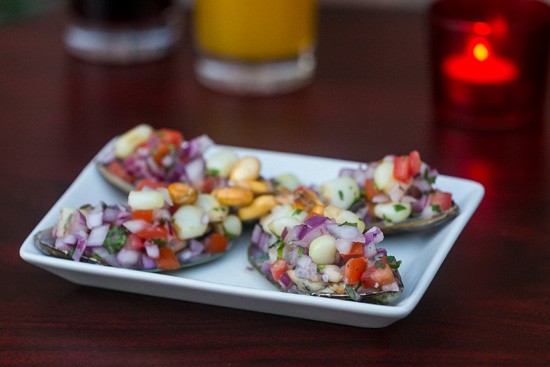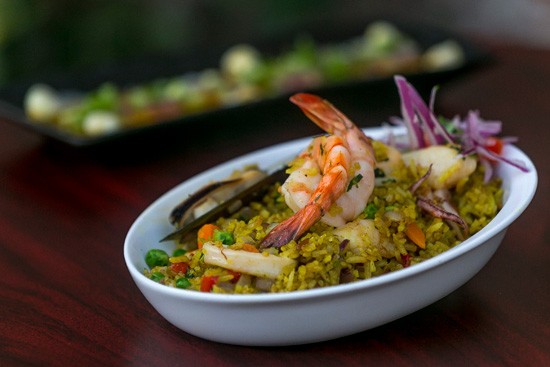
Doesn't it seem as if food pundits have touted Peruvian food as “The Next Big Thing” for more than a decade? Back in 2011, The Wall Street Journal cited as proof the Zagat Survey listing four times more Peruvian joints than it did 10 years prior. And then there's ceviche, it says, which is showing up everywhere, even at Le Bernardin. For more evidence, it mentioned that LA went nuts over Ricardo Zarate's excellent Mo-Chica in 2009, which is true.
But ask anyone who has been eating the pollo a la brasa at the original El Pollo Inka in Lawndale or gorging on tallarín at Inka Grill or Inka Mama locally, and they'll tell you that Peruvian food's been here long before Zarate made it trendy. Still, decreeing it “The Next Big Thing” seems a bit ethnocentric, if not a little flippant about a cuisine millennia in the making. Peruvian food is a complex, multifaceted mélange of flavors, ingredients and traditions cultivated by its indigenous Quechua culture and influenced by the influx of Chinese, Japanese, Spanish and African immigrants over the past 500 years.
]
And if America ever embraces a Peruvian dish as it does pizza, it won't be because it appeared on Eric Ripert's silver platter. It will be because it's cooked by locals for locals in a moderately priced neighborhood joint, such as Eqeko, the new restaurant by the owners of Tootsie Ice Cream, tucked inside a modest brick building in downtown Santa Ana. And, yes, the first thing on the menu here is ceviche. Why wouldn't it be? It's real Peruvian ceviche, served with crunchy fried corn kernels of cancha and its original form called choclo, which are as large as Baba Booey's teeth.
Most important, the fish in the dish is flawless, luminous, piled into an ivory mountain after being firmed up by a sluicing of lime juice. And when you bite into a cube, you discover it still has texture–it springs back at you before it melts into nothing. Each subsequent forkful is dragged through the electrified orange liquid flavored by ají rocoto, one of Peru's native peppers. And when your tongue begins to tingle from the hotness and your lips start to pucker from the acidity, you calm it all down with chunks of camote, boiled sweet potato.
This base model of ceviche is Eqeko's most thrilling, but you can also opt for the cebiche mixto, which adds shrimp and squid, all of it lashed by that bracing marinade, a concoction the Peruvians drink as though it were soda. If you're up for trying the Japanese-influenced version, Eqeko also makes an excellent tiradito, thin slices of seasonal fish laid out on a plate and drizzled with lime juice and ají amarillo, then sprinkled with minced red onions, scallions and more choclo. Or get the choritos à la chalaca, green mussels topped with a diced red-onion salsa and more lime.
Then move on to the other dishes Eqeko offers, served in tapas-sized portions and priced $6 to $8 per dish. The most expensive is the $9 arroz con mariscos à la Norteña, which looks as if it were seasoned with pesto, but is actually greenish because of cilantro. It's the closest thing you get to a full-sized meal here; everything else is made for passing around the table.
[

The empanadas, served three to an order, are tenderly baked pastry crescents aromatic with ground beef and cumin and come with a side of a runny ají amarillo dipping sauce they don't actually need. The tamalitos de seco, a traditional Peruvian tamale stuffed with cilantro-stewed beef, arrives with its cilantro pot liquid poured over the entire dish as though it were a wet burrito.
Eqeko also makes one of the better ají de gallinas I've had in a while–not drowned with the usual yellow bread-milk-walnut sauce, but just lightly tossed in it. If you're lucky, the special will be carapulcra, a stew cooked with pork and dehydrated potatoes and plated with two perfectly fried logs of yucca.
And, of course, there are potatoes. When the few pieces of boiled spuds are draped in a jade-hued sauce made from huacatay, it's called the ocopa. If they're in a cheesy yellow sauce, that's the papa à la Huancaina. Both are great. But the greatest potato dish of all is the causa, a sculpted terrine of tuna salad sandwiched between chilled mashed potatoes seasoned with ají amarillo.
Eqeko also serves quinoa, the best argument against calling the cuisine trendy since it's been a staple of the Andean diet at least a thousand years before Jesus lived. So perhaps rather than calling Peruvian food the “Next Big Thing,” we should just say, “What took us so long?”
Before becoming an award-winning restaurant critic for OC Weekly in 2007, Edwin Goei went by the alias “elmomonster” on his blog Monster Munching, in which he once wrote a whole review in haiku.

